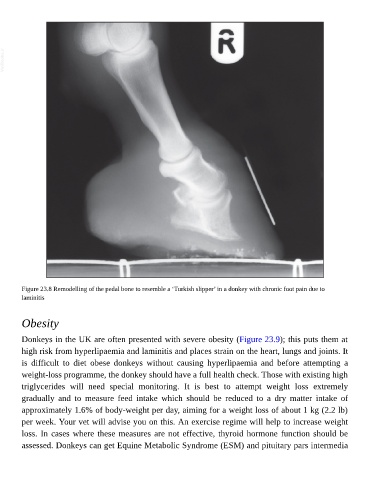Page 1051 - The Veterinary Care of the Horse
P. 1051
VetBooks.ir
Figure 23.8 Remodelling of the pedal bone to resemble a ‘Turkish slipper’ in a donkey with chronic foot pain due to
laminitis
Obesity
Donkeys in the UK are often presented with severe obesity (Figure 23.9); this puts them at
high risk from hyperlipaemia and laminitis and places strain on the heart, lungs and joints. It
is difficult to diet obese donkeys without causing hyperlipaemia and before attempting a
weight-loss programme, the donkey should have a full health check. Those with existing high
triglycerides will need special monitoring. It is best to attempt weight loss extremely
gradually and to measure feed intake which should be reduced to a dry matter intake of
approximately 1.6% of body-weight per day, aiming for a weight loss of about 1 kg (2.2 lb)
per week. Your vet will advise you on this. An exercise regime will help to increase weight
loss. In cases where these measures are not effective, thyroid hormone function should be
assessed. Donkeys can get Equine Metabolic Syndrome (ESM) and pituitary pars intermedia

